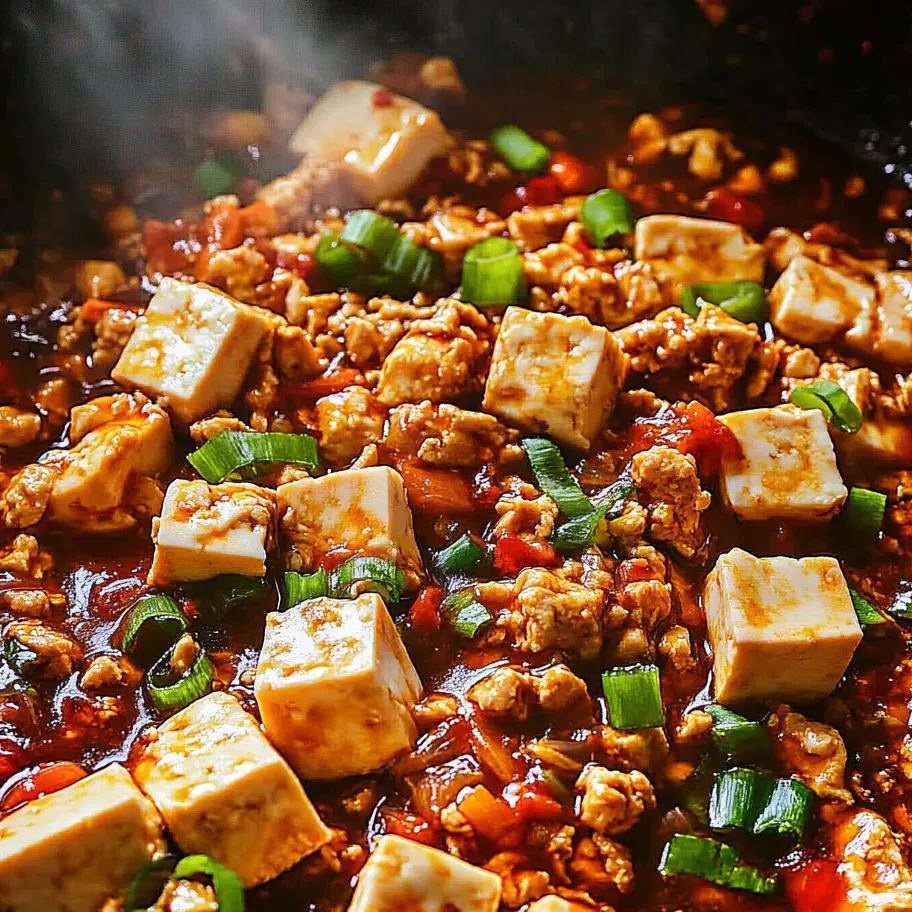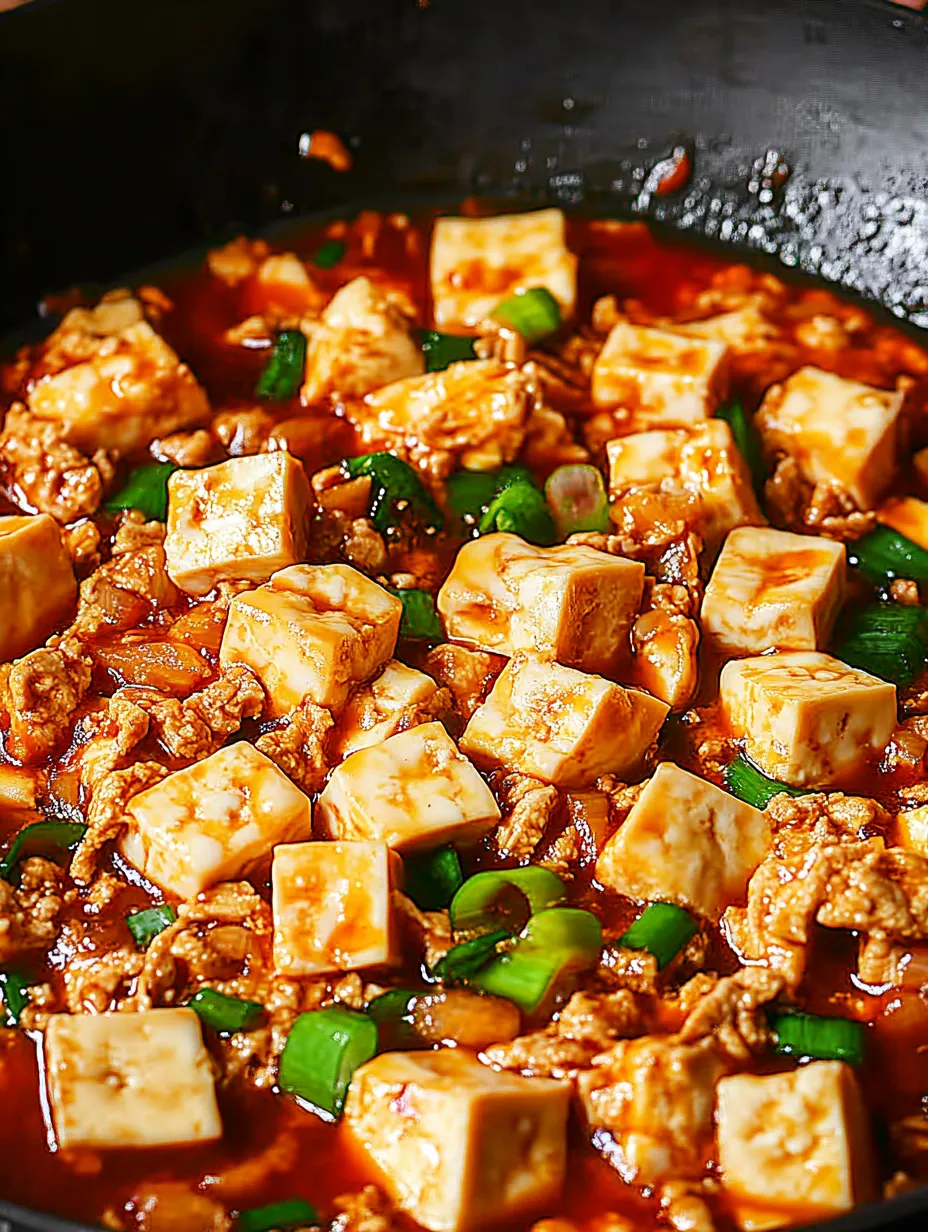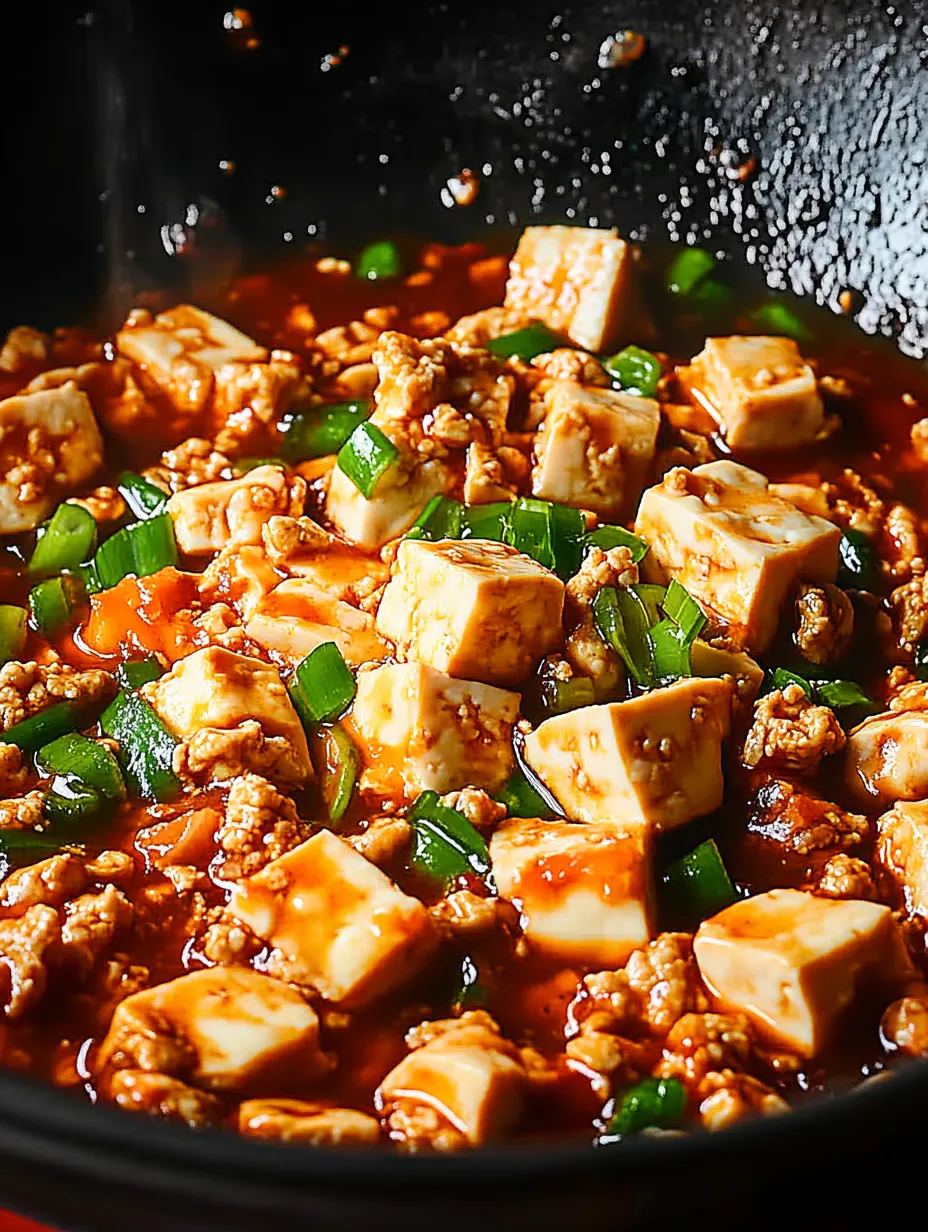 Save
Save
This hearty Mapo Tofu recipe delivers authentic Sichuan flavors in just 20 minutes. The silky tofu cubes bathed in a spicy, savory sauce with fragrant ground pork create a perfect balance that has made this dish a global favorite.
I first made this recipe when I was craving comfort food during a rainy evening. The combination of silky tofu and spicy sauce was so satisfying that it became my go to weeknight meal when I want something impressive without spending hours in the kitchen.
Ingredients
- Silken tofu: provides the perfect delicate texture that absorbs all the flavors of the sauce
- Ground pork: adds richness and depth use good quality meat with some fat for best flavor
- Doubanjiang: spicy broad bean paste is the key ingredient giving authentic Sichuan flavor
- Sichuan peppercorn: creates that distinctive numbing sensation that makes authentic Mapo Tofu special
- Chicken stock: adds depth to the sauce homemade is best but low sodium store bought works well
- Cornstarch: creates that perfect silky sauce texture that clings to the tofu
- Sesame oil: adds a nutty finishing touch use toasted variety for best flavor
Step-by-Step Instructions
- Prepare the Thickening Agent:
- Combine cornstarch with cold water in a small bowl and stir until completely smooth with no lumps. This slurry will help thicken the sauce to the perfect consistency that clings to the tofu. Always use cold water for best results as hot water will cause clumping.
- Prepare the Tofu:
- Cut the tofu into 1inch cubes using a sharp knife with gentle pressure. The key is making clean cuts without crushing the delicate tofu. Blanching the tofu cubes in salted water helps firm them up slightly while maintaining their silky texture.
- Cook the Meat Base:
- Brown the ground pork in oil over medium heat until all moisture evaporates. This step is crucial for developing deep flavor. Make sure to break up any clumps for even cooking and better texture in the final dish.
- Build the Aromatics:
- Add garlic ginger and scallion whites to the cooked meat and stir until fragrant about 30 seconds. These aromatics form the foundation of flavor for the sauce. Be careful not to burn them as they can become bitter.
- Create the Sauce:
- Add doubanjiang soy sauce and other seasonings to create the complex flavor base. Cook these ingredients briefly to release their oils and fragrance before adding liquid. The sauce should be deeply red with a glossy appearance.
- Combine Everything:
- Gently fold the tofu into the sauce using a spatula or wooden spoon with a scooping motion rather than stirring. This preserves the tofu texture while allowing it to absorb the flavors. Simmer briefly but avoid overcooking.

The doubanjiang is truly the soul of this dish. I once tried to make Mapo Tofu without it and the result was completely different. After visiting Sichuan province years ago I learned that the aged bean paste gives this dish its distinctive color and depth that cannot be replicated with other ingredients.
Choosing the Right Tofu
Silken tofu is traditional for Mapo Tofu providing that melt in your mouth texture. However if you prefer something more substantial medium firm tofu works well too. The key difference is that silken tofu will be more delicate requiring gentler handling while medium firm tofu holds its shape better but absorbs slightly less flavor. Whatever you choose look for fresh tofu with a clean smell and avoid packages with excess water or yellowing.
Perfect Heat Level
Authentic Mapo Tofu should have a distinct numbing spiciness that builds with each bite. For those new to Sichuan cuisine start with less doubanjiang and Sichuan peppercorn adding more in future attempts as your palate adjusts. The beauty of this dish is finding your perfect balance between heat and flavor. Some Sichuan restaurants offer a scale of spiciness so customers can customize their experience just as you can at home.

Serving Suggestions
Traditionally Mapo Tofu is served with steamed white rice which provides the perfect neutral backdrop for the bold flavors. For a complete meal pair it with stir fried greens like bok choy or Chinese broccoli. The contrast between the spicy tofu and fresh vegetables creates a balanced plate. Some people enjoy pickled vegetables on the side to cleanse the palate between bites of the rich spicy main dish.
Storage and Reheating
Mapo Tofu actually improves in flavor after sitting for a day in the refrigerator as the tofu continues to absorb the sauce flavors. Store leftovers in an airtight container for up to 3 days. When reheating add a splash of water or stock to loosen the sauce and warm gently over medium low heat. Avoid aggressive boiling which can break down the tofu. The cornstarch may cause the sauce to thicken substantially when cold but it will loosen again when warmed.
Frequently Asked Cooking Questions
- → What can I substitute for doubanjiang?
If doubanjiang is unavailable, use Korean gochujang with a splash of soy sauce, or a mixture of miso paste and chili paste. The flavor won't be identical, but these alternatives provide similar umami and spice characteristics. Adjust quantities to taste as gochujang can be sweeter than doubanjiang.
- → Can I make vegetarian Mapo Tofu?
Yes! Replace ground pork with crumbled firm tofu, tempeh, or plant-based meat substitute. Use vegetable broth instead of chicken stock and omit the chicken bouillon. For added umami, include 1-2 teaspoons of mushroom powder or an extra splash of soy sauce to compensate for the meat's savory flavor.
- → Why is my tofu breaking apart?
Silken tofu is delicate. Handle it gently when cutting and cooking. Blanch briefly just to warm through rather than fully cook it. When adding to the sauce, use a spatula to carefully fold rather than stir vigorously. Consider using medium-firm tofu if you prefer a sturdier texture that's less likely to break.
- → How spicy is this dish and can I adjust the heat level?
Traditional Mapo Tofu is moderately spicy. Adjust heat by reducing doubanjiang to 1 tablespoon for mild flavor or increasing to 2 tablespoons for extra heat. The chili oil quantity can also be modified based on preference. Sichuan peppercorns contribute a numbing sensation rather than heat - omit them if you don't enjoy this distinctive flavor.
- → What's the best way to store leftover Mapo Tofu?
Store leftovers in an airtight container in the refrigerator for up to 3 days. Reheat gently on the stovetop over low-medium heat, adding a splash of water if needed to restore the sauce consistency. Avoid microwave reheating as it may cause the tofu to develop an unpleasant texture.
- → Can I prepare Mapo Tofu in advance?
For best results, prepare the sauce with meat in advance, but add the tofu just before serving. The sauce base can be refrigerated for 2-3 days. When ready to serve, reheat the sauce, prepare fresh tofu, and combine them following steps 8-9 of the instructions for the optimal silky texture.
